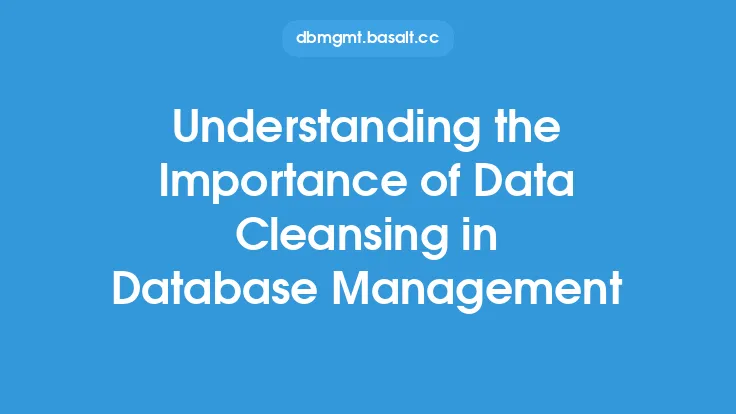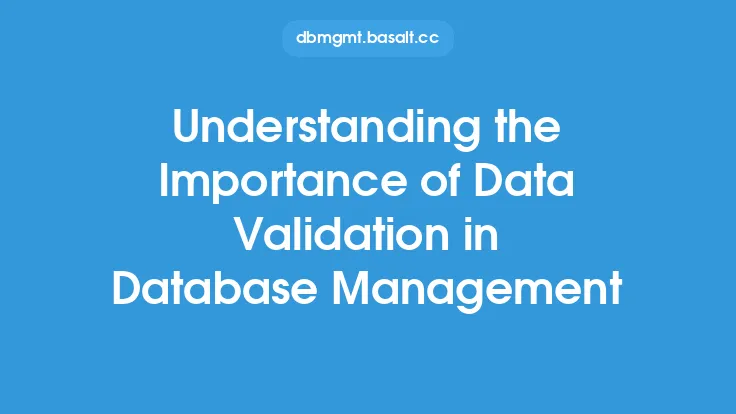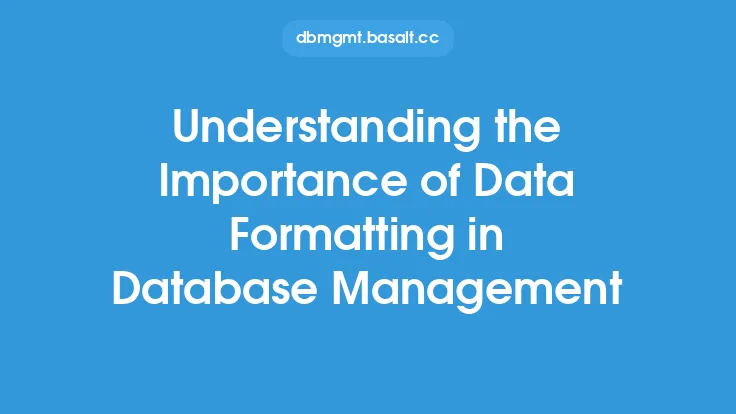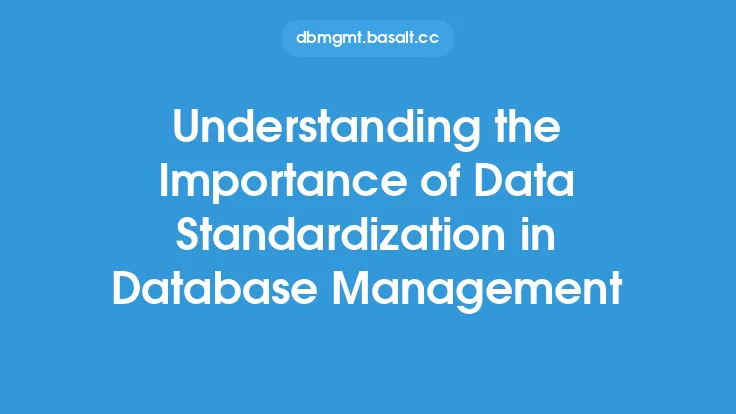Data archiving is a critical component of database management that involves the systematic removal and storage of inactive or infrequently accessed data from a database. This process is essential for maintaining the performance, scalability, and reliability of a database, as well as ensuring the long-term preservation of historical data. In this article, we will delve into the importance of data archiving in database management, exploring its benefits, challenges, and best practices.
What is Data Archiving?
Data archiving is the process of moving data that is no longer actively used or is infrequently accessed to a separate storage location, known as an archive. This data is typically stored in a compressed and read-only format, making it inaccessible for everyday transactions but still available for historical or analytical purposes. Data archiving is often confused with data backup, but the two are distinct processes. While data backup involves creating a copy of data to prevent loss in case of a disaster, data archiving involves the intentional removal of data from a database to improve performance and reduce storage costs.
Benefits of Data Archiving
Data archiving offers several benefits, including improved database performance, reduced storage costs, and enhanced data management. By removing inactive data from a database, organizations can improve query performance, reduce the time it takes to complete backups, and minimize the risk of data corruption. Additionally, data archiving can help organizations reduce their storage costs by eliminating the need to store large amounts of inactive data on expensive primary storage devices. Data archiving also enables organizations to better manage their data, making it easier to comply with regulatory requirements and ensure the long-term preservation of historical data.
Challenges of Data Archiving
Despite its benefits, data archiving poses several challenges, including data retrieval, data integrity, and data security. One of the primary challenges of data archiving is ensuring that archived data can be easily retrieved when needed. This requires careful planning and the implementation of a robust data archiving strategy that includes metadata management, data indexing, and search functionality. Another challenge is ensuring the integrity of archived data, which requires careful handling and storage to prevent data corruption or loss. Finally, data archiving poses security risks, as archived data can be vulnerable to unauthorized access or theft.
Data Archiving Techniques
There are several data archiving techniques that organizations can use, including online archiving, nearline archiving, and offline archiving. Online archiving involves storing archived data on a disk-based storage device, making it readily available for retrieval. Nearline archiving involves storing archived data on a tape-based storage device, which is slower to access than disk-based storage but offers higher storage capacities. Offline archiving involves storing archived data on removable media, such as CDs or DVDs, which are typically used for long-term data preservation.
Data Archiving Tools and Technologies
There are several data archiving tools and technologies available, including data archiving software, storage devices, and cloud-based archiving services. Data archiving software provides a range of features, including data compression, encryption, and metadata management, to help organizations manage their archived data. Storage devices, such as disk-based and tape-based storage systems, provide a range of storage options for archived data. Cloud-based archiving services offer a scalable and on-demand storage solution for archived data, eliminating the need for organizations to manage their own storage infrastructure.
Conclusion
In conclusion, data archiving is a critical component of database management that offers several benefits, including improved database performance, reduced storage costs, and enhanced data management. However, data archiving also poses several challenges, including data retrieval, data integrity, and data security. By understanding the importance of data archiving and implementing a robust data archiving strategy, organizations can ensure the long-term preservation of their historical data, improve their database performance, and reduce their storage costs. As data continues to grow in volume and complexity, the importance of data archiving will only continue to increase, making it essential for organizations to prioritize data archiving as a key component of their database management strategy.





